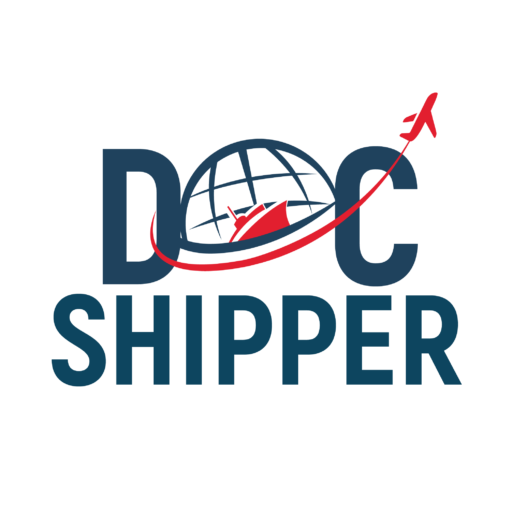Why did the shipping container go to school? Because it wanted to get a little bit classier. Beyond the humor lies the reality of international trade uncertainties, especially surrounding rates, transit times, and the labyrinth of customs regulations. In this comprehensive destination guide, you'll find detailed insights into shipping freight from Qatar to France.
We unpack the specifics of each freight option (air, sea, road, rail), help you navigate through the complexities of customs clearances, decode the intricacies of duties and taxes, and share bespoke advice to steer your business towards seamless international transactions. If the process still feels overwhelming, let DocShipper handle it for you! As an international freight forwarder, we transform your shipping challenges by mastering every nuance of the shipping process, leading your business to success one shipment at a time.
Which are the different modes of transportation between Qatar and France?
Shipping between France and Qatar brings unique challenges due to their geographical spread. Not all transport methods are feasible due to large tracts of land and sea between them. This leaves us with ocean and air freight as key contenders. Picture it like a race between a hawk and a ship - the hawk (air cargo) is faster, but the ship (ocean cargo) can carry a lot more weight, and is often less expensive. The choice, then, depends on your specific needs: the urgency of delivery, quantity of goods, and your budget, amongst others. Let's dive deeper into it.
How can DocShipper help?
Transporting goods from Qatar to France can feel like threading a needle in a complex maze! With DocShipper, you can rest easy. Our seasoned experts manage all, from customs clearance to ensuring safe transit. Got a question? Reach out to our consultants anytime. Ask for your free, no-obligation quote and get a response in less than 24 hours. Let DocShipper simplify your global trade journey.
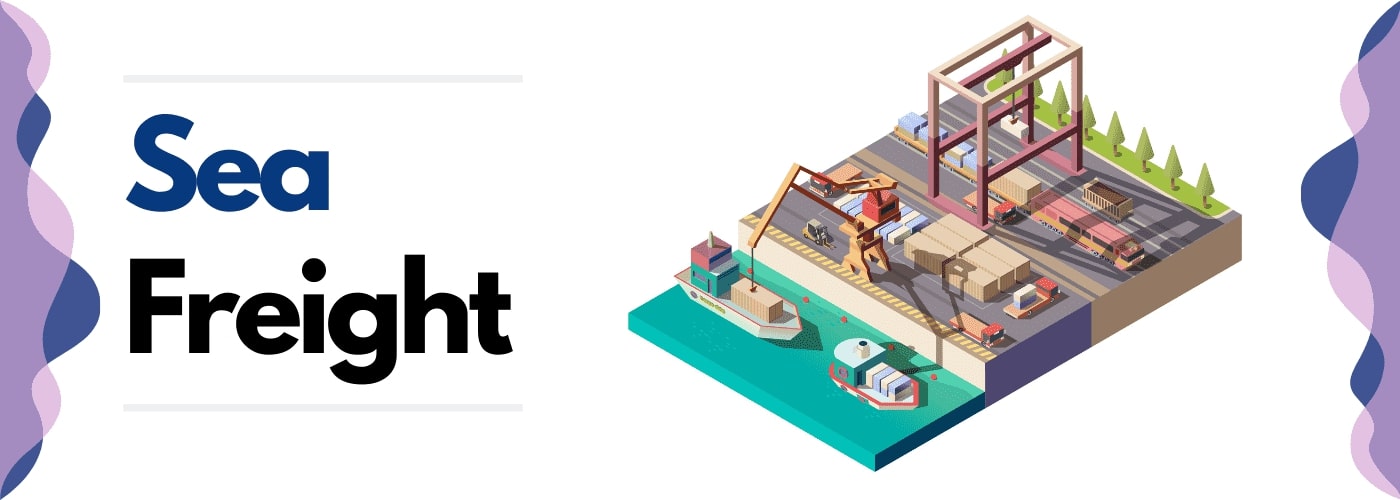
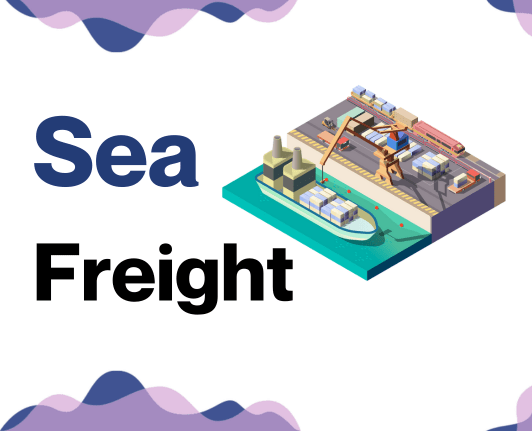
![]()
DocShipper Tip: Sea freight might be the best solution for you if:
- You're dealing with hefty quantities or large-scale goods. Sea freight is your go-to for maximizing space without stretching your budget.
- Your cargo doesn't have an urgent deadline, as sea freight typically has longer transit times compared to air or rail.
- Your shipping routes are between major ports, allowing you to leverage the extensive global network of sea shipping lanes.
Sea freight between Qatar and France
Shipping by sea between Qatar and France remarkably nurtures the vibrant trade relationship that bridges these nations, connecting their bustling industrial hubs of Doha and Le Havre. Ocean freight, despite its leisurely pace, is the go-to option for transporting heavy, high-volume goods, adding a silver lining to its slowness with cost-effectiveness.
Now, switch your HVAC hats for sailor caps — synonymous with the choppy waters shippers and businesses often tread. As musician Sia puts it, There's no map to human behaviour!” but with the right tools and knowledge, it's more of a winding road than a treacherous cliff. You may have made, or even making, numerous shipping errors between these two point A and point B, but strap in, we're going to set this ship on a smooth course! Stick with us and prepare to stay afloat with succinct best practices, clear specifications, and pivotal insights that combat any stormy weather on your sea freight expedition.
Main shipping ports in Qatar
Hamad Port
Location and Volume: Situated in Umm Al-Houl, south of Doha, Hamad Port is the linchpin of Qatar's maritime trading, boasting an impressive annual shipping volume of over 1.9 million TEUs.
Key Trading Partners and Strategic Importance: The port maintains robust commerce with key trading partners, such as China, India, and the UAE. As Qatar's largest port, it plays a monumental strategic role, significantly contributing to Qatar's self-sufficiency by diversifying the country's trade routes and partners.
Context for Businesses: If expanding your business reach to Middle Eastern and Asian markets is on your radar, then Hamad Port can be a crucial cog in your logistics fulfillment owing to its modern infrastructure, high operational capacity, and strategic location bridging Eastern and Western shipping routes.
Ras Laffan Industrial City
Location and Volume: Ras Laffan Industrial City, located in the northern part of Qatar, primarily handles bulk and liquid commodities. Although it may not match the TEU volume of Hamad Port, it still stands crucial due to the volume of commodities it handles, mainly petrochemicals and natural gas products.
Key Trading Partners and Strategic Importance: With key trading partners globally including Japan, South Korea, and India, the port holds significant strategic importance as it serves as the crux of Qatar's booming liquefied natural gas (LNG) and petrochemical sectors.
Context for Businesses: If your business belongs to the energy sector, especially natural gas and petrochemicals, Ras Laffan Port might be an inevitable part of your shipping strategy due to its integrated facilities, dedication to energy commodities, and wide-reaching trade links.
Doha Port
Location and Volume: Doha Port, nestled in the heart of Doha city, has marked its footprint in Qatar shipping map, predominantly catering to cruise ships.
Key Trading Partners and Strategic Importance: The shipping volume may not parallel Hamad Port, but the strategic importance lies in boosting the country's tourism by welcoming cruise ships from all around the world.
Context for Businesses: If your business orbits around hospitality, retail or tourism, Doha Port's increasing reception of international cruise liners may carve out a fruitful path for you, capitalizing on the growing influx of tourists to Qatar.
Main shipping ports in France
Port of Marseille
Location and Volume: Located on the French Riviera, Port of Marseille is the largest seaport in France, handling over 1 million TEUs annually. As France's primary oil and gas port, it plays a crucial role in the country's energy sector.
Key Trading Partners and Strategic Importance: Primarily servicing the Mediterranean region, the Port of Marseille is strategically important to countries such as Italy, Spain, and Algeria. It's Marseille’s location—as the gateway to Southern Europe—that makes it strategically vital.
Context for Businesses: If you're aiming to penetrate the Southern European and Mediterranean markets, the Port of Marseille serves as an efficient entry point given its extensive trade networks and robust infrastructure.
Port of Le Havre
Location and Volume: Located in northern France along the English Channel, Le Havre is the country's second-largest port by container traffic. It processes around 68% of the country's container traffic with a shipping volume of over 2.5 million TEUs.
Key Trading Partners and Strategic Importance: Le Havre mainly trades with Asia, the Americas, and the rest of Europe. The port's strategic importance lies in its location—the mouth of the River Seine—which makes it a vital gateway for import and export activities in Europe.
Context for Businesses: If you're seeking rapid access to European markets, specifically France and the Benelux countries, the Port of Le Havre, with its strategic location and well-connected infrastructure, should be a major part of your logistics strategy.
Port of Dunkerque
Location and Volume: Located near the Belgian border, Dunkirk is France's third-largest port. It is particularly significant for bulk cargo and handles around 51 million tonnes annually.
Key Trading Partners and Strategic Importance: Dunkirk primarily trades with other EU countries, including the United Kingdom, Ireland, and the Netherlands, and with global partners like China and Russia. Dunkirk’s geographical location and the facilities it houses—like the LNG terminal—contribute to its strategic importance.
Context for Businesses: If your business deals in heavy bulk commodities or you want an alternative entryway to Northern European markets, consider the Port of Dunkirk in your logistics strategy due to its large dedicated bulk terminals.
Port of Fos-sur-Mer
Location and Volume: Near Marseille, Fos-sur-Mer complements the activities of the larger southern Port of Marseille. Specializing in bulk cargo, it handles over 800,000 TEUs each year.
Key Trading Partners and Strategic Importance: The port has a broad network of trade partners, with a focus on the Mediterranean region and Africa. Fos-sur-Mer's strategic importance lies in its oil terminal, bringing in a significant portion of France's oil imports.
Context for Businesses: If your business involves oil, chemical or bulk goods trade with Mediterranean or African markets, the Port of Fos-sur-Mer, with its oil refineries and industrial complexes, could crucially support your shipping needs.
Port of Nantes-Saint Nazaire
Location and Volume: Located on the Loire River's mouth, Nantes-Saint Nazaire is another of France's principal ports. It handles over 3,000 ships annually and is vital for various types of cargo, particularly agribulk.
Key Trading Partners and Strategic Importance: This dual port mainly trades with European Union countries, Africa, and the Americas. Historically significant, its shipyards produce some of the world's largest cruise liners, and it has maintained its critical role in shipbuilding.
Context for Businesses: If your business deals in agribulk exports or requires shipping solutions for oversized or heavy-lift cargo, the Port of Nantes-Saint Nazaire—with its excellent handling capacities and options—could be pivotal to your logistics strategy.
Port of Rouen
Location and Volume: Situated further up the River Seine from Le Havre, Rouen is a major French port for agricultural products, especially grain. It handles over 7 million tonnes of grain every year.
Key Trading Partners and Strategic Importance: Rouen's top trading partners include Algeria, Germany, and the United Kingdom. Its strategic importance is underscored by being Europe's leading grain port and the leading port on the Seine River.
Context for Businesses: If you're involved in the agricultural sector, particularly grain and other agribulk, the Port of Rouen's exceptional grain storage and handling facilities would offer a valuable addition to your shipping strategy.
Should I choose FCL or LCL when shipping between Qatar and France?
Deciding between Full Container Load (FCL) and Less than Container Load (LCL), also known as consolidation, for your sea freight from Qatar to France can feel like a puzzle. The stakes are high; this choice will influence your cost, delivery time, and overall shipping success. This section reveals the strengths and weaknesses of both options, helping you select the ideal solution for your specific shipment requirements. Unlock the secret to strategic, successful shipping and unravel the FCL vs. LCL conundrum in the pages ahead.
LCL: Less than Container Load
Definition: LCL or Less than Container Load is a shipping method used when the volume of your cargo is not enough to fill a whole container. Essentially, your cargo shares a container with goods from different shippers, combined into one shipment.
When to Use: LCL is better when the cargo is less than 13/14/15 CBM (cubic meters). This option offers price flexibility for shippers with a low volume of goods, maximizing the space and cost-effectiveness of the shipment.
Example: Suppose your business in Qatar has 10 CBM of furniture to send to a client in France. Instead of booking a full container and wasting space, you opt for LCL shipping. This ensures your cargo is securely packed alongside other freights, delivering successful, cost-effective transportation.
Cost Implications: Although the lcl shipping quote per CBM is higher than FCL (full container load), overall costs can be lower with LCL as you only pay for the space you occupy. However, ensuring your lcl shipment's dimensions are accurate is vital, as any over-estimation can lead to cost overruns in lcl freight.
FCL: Full Container Load
Definition: FCL shipping, or Full Container Load, means your goods take up an entire container by themselves, be it a 20'ft or a 40'ft container.
When to Use: Opt for FCL when your cargo exceeds 13-15 CBM (Cubic Meters) - it's more economical for higher volumes and safer as your goods remain sealed within the same container from Qatar to France.
Example: Imagine you're a furniture exporter with a large order to ship - choosing FCL could be your best solution. Your 15 CBM of chairs, sealed in a 20'ft FCL container, stays safe from loading to unloading.
Cost Implications: Cost implications in FCL shipping differ based on various factors. The FCL shipping quote includes the cost of reserving an entire container. Suppose you're able to utilize its full capacity, the cost per unit could be lower compared to LCL (Less than Container Load) shipping, giving FCL a cost-effective edge for larger shipments.
Unlock hassle-free shipping
Choosing between consolidation or a full container for shipping from Qatar to France can feel overwhelming. That's where DocShipper comes in. We simplify cargo shipping, so businesses can focus on what they do best. Our ocean freight experts analyze factors like your budget, urgency, and cargo volume to recommend the most cost-effective and efficient solution. Ready to take the guesswork out of shipping? Contact us now for a free cost estimate!
How long does sea freight take between Qatar and France?
Sea freight shipping from Qatar to France typically takes around 25-30 days, though these transit times vary based on numerous factors. Considerations include the exact ports of departure and arrival, the weight of the shipment, and the nature of the goods being transported. For the most accurate details tailored to your specific needs, we highly recommend consulting with a freight forwarder like DocShipper.
Average Sea Freight Transit Times (Qatar to France):
| Qatar (Port) | France (Port) | Average Shipping Time (Days) |
| Hamad Port | Port of Le Havre | 49 |
| Umm Said | Port of Marseille | 38 |
| Al Rayyan | Port of Calais | 31 |
*Note: Terminal ports are not included in the above list.
How much does it cost to ship a container between Qatar and France?
Estimating the exact shipping cost between Qatar and France is a lot like working puzzle pieces. It depends on numerous variables - the Point of Loading, Point of Destination, your chosen shipping carrier, the characteristics of your goods, and at times, even monthly market fluctuations. Ocean freight rates can broadly vary, offering a wide price range per CBM. So, pinpointing an explicit rate might seem like a reach. Yet, fret not! Our dedicated shipping specialists understand these twists and turns. They'll scrutinize every detail, explore all angles and quote you the best possible rates, aligning with your distinct case. Your seamless shipping experience is our commitment.
Special transportation services
Out of Gauge (OOG) Container
Definition: An OOG, or Out of Gauge container, is a specialized shipping container designed for over-sized goods that cannot fit into standard sized containers.
Suitable for: Usually used to ship large machinery, industrial equipment, or any unusually sized or shaped goods that require specific handling due to their dimensions.
Examples: For instance, if you're moving large drilling machinery, construction equipment or industrial pipelines from Qatar to France, an OOG container would be a perfect fit.
Why it might be the best choice for you: This is ideal if you have out of gauge cargo that exceeds standard container dimensions and need a confident way to ship your goods safely.
Break Bulk
Definition: Break bulk refers to the method of shipping goods individually or in batches, not in a container.
Suitable for: It's perfect for goods that cannot be shipped using traditional methods due to their size, weight or quantity.
Examples: Items such as large turbines, generators, or steel beams for construction are often shipped as break bulk between Qatar and France.
Why it might be the best choice for you: If you're shipping heavy machinery or goods that cannot be containerized, break bulk might be your best sea freight option.
Dry Bulk
Definition: Dry bulk involves the shipping of loose cargo load, such as grains, coal, or minerals, without any packaging or container.
Suitable for: It's most suitable for homogeneous and loose unpackaged goods.
Examples: If you’re shipping goods like sand or cement from Qatar to France, dry bulk would be the ideal avenue for large volumes.
Why it might be the best choice for you: Dry bulk helps maximize your shipping capacity while maintaining cost efficiency.
Roll-on/Roll-off (Ro-Ro)
Definition: Ro-Ro refers to vessels designed to carry wheeled cargo such as cars, trucks, trailers, or railroad cars that are driven on and off the ro-ro vessel on their own wheels or using a platform vehicle.
Suitable for: This is ideal for transporting rolling stock, automobiles, and heavy machinery.
Examples: If you're exporting cars or trucks from Qatar to France, Ro-Ro would provide you with an efficient transportation solution.
Why it might be the best choice for you: Roll-on/Roll-off gives you the ease of simply driving your vehicles on and off the vessel, cutting down loading and unloading times.
Reefer Containers
Definition: Reefer containers are refrigerated shipping containers used for transport of perishable goods.
Suitable for: Used primarily for foodstuffs like fruits, vegetables, dairy products, or any other type of goods that need controlled temperature.
Examples: For instance, if you're shipping dairy products or fresh produce from Qatar to France, a reefer container would ensure your goods reach their destination fresh.
Why it might be the best choice for you: It's crucial when you want to maintain the quality of perishable cargo over long sea journeys.
DocShipper can guide you through this complex process to pinpoint the most efficient and cost-effective solution according to your specific shipping needs. Don't hesitate to contact us for a free shipping quote in less than 24 hours.
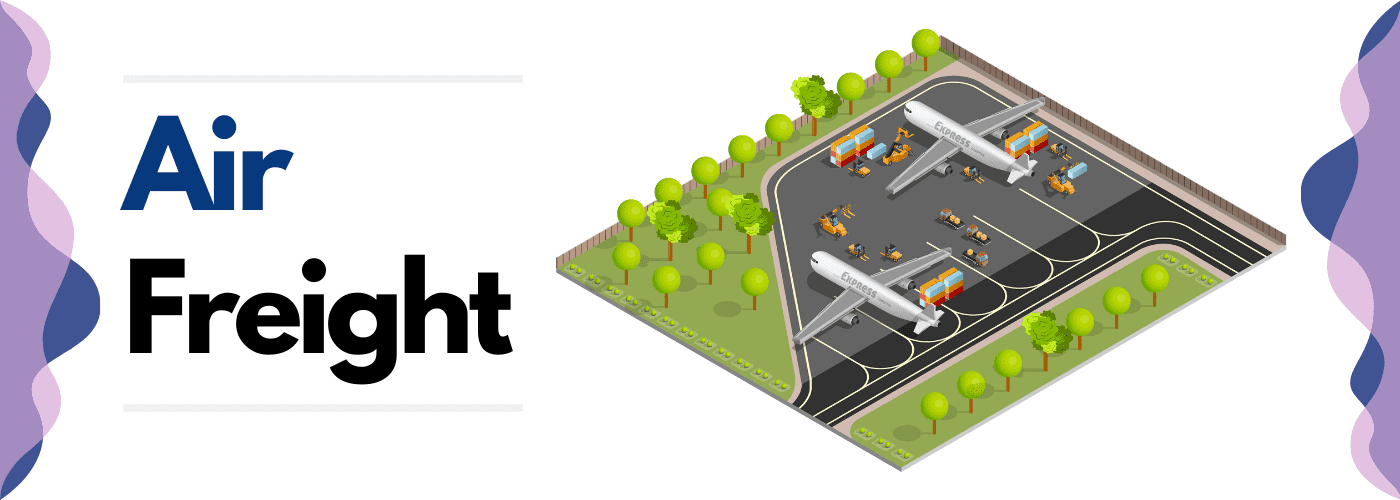
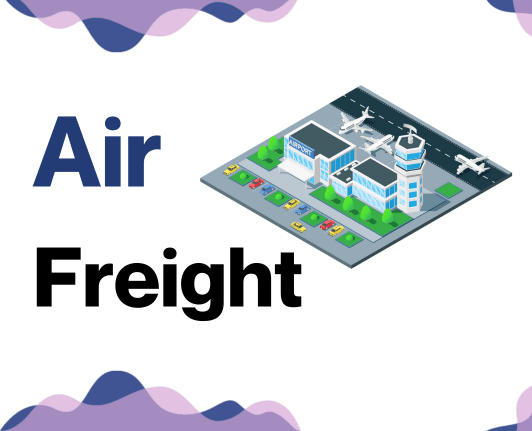
![]()
DocShipper Tip: Air freight might be the best solution for you if:
- You're up against the clock or have a non-negotiable delivery date. Air freight is your fastest bet for meeting tight timelines.
- Your shipment is on the smaller side, falling below 2 CBM. Air freight is particularly well-suited for compact cargo loads.
- Your goods are destined for locations that aren't well-served by maritime or rail options. Air freight expands your reach by connecting you to a vast array of international airports.
Air freight between Qatar and France
Shuttling goods between Qatar and France? Air freight is your trusty companion. Imagine the speed of a cheetah: swift, reliable, and efficient. That's air freight for you. It's perfect for smaller shipments that are worth their weight in gold, just like iPads or famous French perfumes.
Now, onto a bigger problem haunting shippers. Think of it like baking a cake without a recipe. Sounds chaotic, right? That's what happens when shippers jump into air freight ill-prepared. Many trip up on vital steps like incorrectly using the weight formula to price their cargo, leading to nasty surprises. Failing to follow best practices can send costs skyrocketing—not the smooth take-off anyone wants. We'll show you how to sidestep such pitfalls in this guide.
Air Cargo vs Express Air Freight: How should I ship?
Choosing the right shipping method from Qatar to France can make or break your business's deadlines and budget. Unravel this decision process with us as we outline key differences between Air Cargo, typically onboard passenger airlines, and Express Air Freight, which flies on dedicated cargo planes, to tailor your shipping strategy to your unique business needs.
Should I choose Air Cargo between Qatar and France?
With air cargo from Qatar to France, you may find flexibility in your budget without compromising on service reliability. Air France and Qatar Airways, premier airlines in this route, offer consistent shipments and trustworthy delivery. However, remember that strict flight schedules can lead to longer transit times. For cargo above 100/150 kg (220/330 lbs), this method becomes increasingly cost-effective, balancing quality and price effectively for larger freight shipments. Review their services, Air France and Qatar Airways, to see if air cargo meets your business needs.

Should I choose Express Air Freight between Qatar and France?
For smaller shipments under 1 CBM or 100/150 kg (220/330 lbs), express air freight could be your quickest and most efficient option. This specialist service uses cargo-only aircraft, letting your goods fly without passengers to minimize delays. Renowned express courier firms like FedEx, UPS, or DHL dominate this market, providing reliable and fast delivery between Qatar and France. If swift delivery is a priority for your business, this could be an ideal choice.

Main international airports in Qatar
Hamad International Airport
Cargo Volume: 2.1 million tons of cargo per year.
Key Trading Partners: Mainly China, the United States, Germany, India, and Japan.
Strategic Importance: It's the hub airport for Qatar Airways and the main international cargo airport in Qatar. Its strategic location in the Middle East serves as a crossroad between East and West making it a central hub for regional and international air freight.
Notable Features: The airport boasts a state-of-the-art cargo terminal that can handle 1.4 million metric tonnes annually.
For Your Business: If you're considering larger shipping volumes or want to reach important Asian, European and American markets efficiently, leveraging Hamad International could be a strategic choice due to its capacity, advanced handling facilities, and numerous connections.
Al Udeid Air Base
Cargo Volume: Smaller compared to Hamad, but significant for specific types of shipments.
Key Trading Partners: Primarily United States and NATO countries.
Strategic Importance: Despite being a military airbase, Al Udeid does handle some commercial freight, particularly for military-related industries.
Notable Features: Its distinct feature is its ability to handle aircraft and cargo of a military nature, with robust security measures in place.
For Your Business: If you are in the defense or related industries, this could be a crucial gateway for your exports to NATO countries, particularly the USA.
Main international airports in France
Charles de Gaulle Airport
Cargo Volume: Handling over 2 million metric tons of freight per year, it's the second busiest cargo airport in Europe.
Key Trading Partners: Major trading partners include Germany, Italy, Spain, UK, and the USA, as well as China, Japan, and other Asian countries.
Strategic Importance: As France's largest airport, its broad network of destinations offers versatility for cargo shipping operations.
Notable Features: Home to Air France Cargo, Charles de Gaulle offers a dedicated cargo area and up-to-date technology for freight handling and tracking.
For Your Business: Located near Paris, a major hub for trade and commerce, this airport provides extensive global links and potential for efficient logistics.
Lyon-Saint Exupéry Airport
Cargo Volume: It handles around 59,191 metric tons of cargo per year.
Key Trading Partners: Main trading partners are European countries such as Germany, Spain, Italy, UK, and the Netherlands.
Strategic Importance: Situated centrally in Europe and France, offering excellent road and rail connections, facilitating multimodal freight solutions.
Notable Features: Known for its efficiency and timeliness, ensuring that your cargo reaches its destination as planned.
For Your Business: With its central location, Lyon Airport could serve as an effective distribution hub for your goods across Europe.
Marseille Provence Airport
Cargo Volume: In 2022, the airport handled over 100,000 metric tons of cargo.
Key Trading Partners: Key markets include Northern Africa, Italy, and Spain, as well as the Middle East and Asia.
Strategic Importance: Proximity to Marseille-Fos Port, the Mediterranean's leading commercial port.
Notable Features: The Marseille cargo center offers diverse services including express courier and temperature-controlled freight.
For Your Business: With its Mediterranean location, Marseille allows for an excellent shipping gateway to North African markets.
Nice Côte d'Azur Airport
Cargo Volume: 15,500 metric tons in 2022, though the airport is smaller than others, it specializes in specific cargo types, such as perishable goods or valuable items.
Key Trading Partners: Primarily Europe, with a stronger focus on countries such as the UK, Switzerland, Germany, and Italy.
Strategic Importance: Considered the primary airport for the entire French Riviera, making it an economic and tourist hub.
Notable Features: Houses lux cargo service, supporting shipment of valuable and delicate goods.
For Your Business: If you are dealing with high-value or sensitive goods, Nice Airport's specialist services might be an ideal choice for your shipping needs.
Toulouse-Blagnac Airport
Cargo Volume: Processed approximately 51,848 metric tons in 2022.
Key Trading Partners: Strongest links throughout Europe, particularly Germany, Belgium, the UK, and Spain, with connections to China also growing.
Strategic Importance: Being the home base of the manufacturing facilities for Airbus, it's a significant player in aerospace logistics.
Notable Features: The airport has developed services and facilities targeting aeronautic industry freight.
For Your Business: If your shipping needs involve the aerospace industry or you require air freight transit to or from the southwest of France, Toulouse-Blagnac could prove beneficial.
How long does air freight take between Qatar and France?
Shipping time between Qatar and France averages around 3-5 days when using air freight. However, various factors influence this estimate, such as the specific departure and arrival airports, along with the weight and type of goods you're shipping. It's important to recognize that these factors can both decrease and extend this timeframe. For definitive transit times tailored to your unique requirements, it's best to consult with a freight forwarder like DocShipper.
How much does it cost to ship a parcel between Qatar and France with air freight?
Shipping air freight between Qatar and France can range broadly, perhaps averaging from $3 to $5 per kg. However, predicting exact costs is complex due to various factors such as airport proximity, parcel dimensions, weight, and nature of goods. Rest assured, our expert team approaches each quote individually, ensuring you receive the most cost-effective and suitable freight solution. Interested in a streamlined shipping experience? Contact us and receive a free quote within less than 24 hours!
What is the difference between volumetric and gross weight?
Gross weight refers to the actual physical weight of your shipment, including packaging and all content. Volumetric weight, on the other hand, is a calculation of the space your shipment occupies in relation to its physical weight.
To calculate gross weight in air freight, simply weigh your package; it's a straightforward process. For instance, a package weighing 25kg is 25kg in gross weight (or roughly 55lbs).
Volumetric weight takes into account the size of your package. It's calculated using the formula: Width (in cm) x Length (in cm) x Height (in cm) divided by 6000. This is based on the International Air Transport Association's standards.
For instance, if your shipment is 50cm long, 50cm wide and 50cm high, its volumetric weight is 50 x 50 x 50 / 6000, which equals to 20.83kg (or roughly 46lbs).
Express Air Freight services often use a different divisor for calculating volumetric weight: 5000 instead of 6000 (e.g., 50 x 50 x 50 / 5000 = 25kg or roughly 55lbs). Make sure to check the specific calculation method used by your chosen service.
Essentially, these calculations matter because air freight charges are determined by comparing the gross and the volumetric weight, and taking whichever is higher. This is done to ensure carriers are fairly compensated for space-heavy but light weight goods that could otherwise limit cargo capacities.


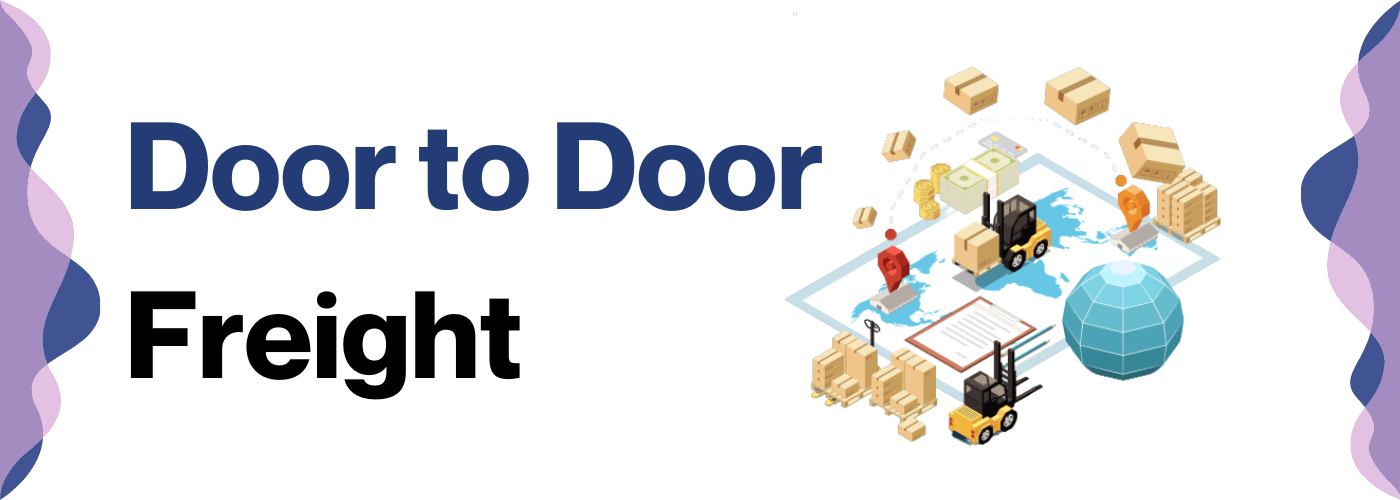
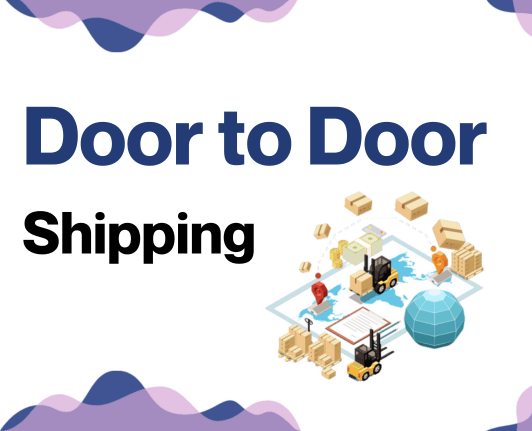
![]()
DocShipper tip: Door to Door might be the best solution for you if:
- You prioritize a smooth, hassle-free shipping experience from start to finish. Door-to-door services manage the entire journey, from initial collection to ultimate delivery.
- You appreciate streamlined communication and would rather deal with one person. A dedicated agent is usually assigned to oversee every detail of your door-to-door shipment.
- You want limit the number of touchpoints for your cargo. Door-to-door services reduce the frequency of transitions between various transport methods, thereby lowering the likelihood of damage or loss.
Door to door between Qatar and France
Shipping across global distances can stir up a storm of logistical challenges. Enter Door to Door shipping - your hassle-free ticket to navigate the shipping seas between Qatar and France. Think quick, comprehensive, and safe maneuvering of your goods from point A to B. This approach bestows a wealth of advantages for your operation. Intrigued? Let's dive in!
Overview – Door to Door
Facing the intricacies of shipping from Qatar to France might feel daunting, but Door to Door shipping provides a stress-free solution. This service is praised by DocShipper's clients as it effortlessly bridges the logistics gap, managing every aspect - from transport organization to customs clearance. However, it's also worth noting some constraints - such as potential time delays and initial cost investment. Yet, the assurance that your goods are responsibly transferred across borders largely outweighs these concerns. In the challenging world of freight forwarding, allow Door to Door shipping to simplify your journey. It's practical, useful, and increasingly popular for a hassle-free shipping experience.
Why should I use a Door to Door service between Qatar and France?
Ever tried shepherding a flock of sheep in a bustling city? Neither have we, but handling your logistics from Qatar to France might feel just as challenging, which is why you might consider Door-to-Door service.
1) Stress Be Gone: No one enjoys the hassle of organizing international cross-border shipping. With Door-to-Door service, leave all the complex responsibility of dealing with multiple transport carriers behind. From pickup to destination, logistics experts handle the transferral seamlessly, so you can focus on your core business operations.
2) Clock Watchers Rejoice: Crucial deadlines looming? Rely on Door-to-Door service to dispatch your goods on-time. With the complete transit planned, your import/export process gets streamlined, secure, and efficient, reducing transit delays.
3) Complex Cargo, No Worry: Shipping delicate, unique, or unusually shaped goods? Rely on dedicated professionals who specialize in dealing with complex freight, giving your shipment the utmost care it deserves, from packaging to safe handling.
4) From Truckin' to Dockin': There's comfort in knowing your goods won't be abandoned at sea, or in the middle of nowhere. The Door-to-Door service ensures your cargo doesn't just reach the port but gets trucked all the way to the final drop location, adding that precious layer of convenience.
5) Complete Transparency: Door-to-Door services commonly offer real-time tracking, allowing you to keep an eye on your shipments and plan accordingly. With full visibility, there's no room for unpleasant suprises.
Give your business the competitive edge of agility, efficiency, and peace-of-mind it needs with Door-to-Door service. It's like having your personal shepherd taking your sheep… err shipments, right to your grass… err door!
DocShipper – Door to Door specialist between Qatar and France
Experience stress-free, door-to-door shipping from Qatar to France with DocShipper! Our team of experts handle everything from A to Z: packing, transport, customs clearance, and choosing the right shipping method. You won't lift a finger! We assign a dedicated Account Executive for each client to provide personalized assistance. Get in touch for a free estimate in less than 24 hours or engage in complimentary consultations with our seasoned professionals. Let us take the shipping load off your shoulders!

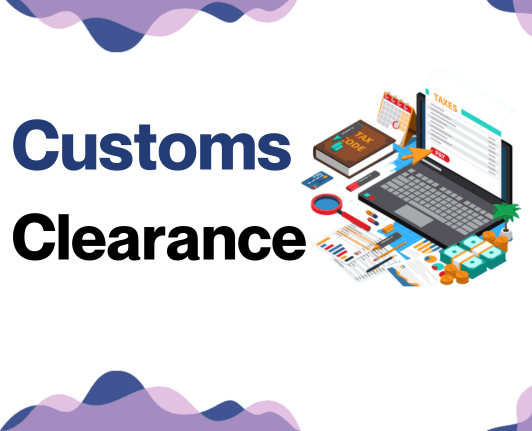
Customs clearance in France for goods imported from Qatar
Customs clearance is an intricate part of the import process. Transporting goods from Qatar to France involves crossing multiple borders and adhering to regulations on both sides. Missteps can lead to costly surprises, from additional tariffs to your shipment being held in customs. It's crucial to grasp customs duties, taxes, quotas, and licenses to prevent these hitches. Thankfully, our guide will break down each of these aspects. As a comprehensive logistics partner, DocShipper has extensive global experience. If your business requires a solid import plan, feel free to provide the origin, value, and HS Code of your goods. We're primed to assist you in navigating French customs complexities smoothly. Stay tuned for detailed insights.
How to calculate duties & taxes when importing from Qatar to France?
When navigating the intricate sea of customs duties, it's essential to have a clear understanding of certain key elements critical to the calculation process. Your practical voyage begins with the knowledge of the country of origin, which is the place where your goods are manufactured or produced. The next passengers on this journey are the Harmonized System (HS) Code, which is a standardized numerical method of classifying traded products, and the Customs Value, which is the total value of all the products, including the cost of freight and insurance.
An equally important fellow traveler is the Applicable Tariff Rate, basically the tax imposed on the imported goods. Plus, there could be other potential travel companions in the form of various taxes and fees that may apply to your products. Put simply, the first leg of your journey in determining your import costs from Qatar to France begins essentially by identifying the manufacturing or production hub of your goods.
Step 1 - Identify the Country of Origin
The first stride in your import endeavor is pinpointing the product's origin. Here's why:
1. Classification: The origin determines the Harmonized System (HS) code, essential for the accurate calculation of duties and taxes.
2. Trade Agreements: France and Qatar share a strong commercial bond under the auspices of the EU-GCC Cooperation Agreement. This pact potentially reduces or even eliminates dutiable costs.
3. Import Restrictions: Certain goods require specific permits or face restrictions based on their origin.
4. Duty Rates: Customs impose varying tariffs based on a product’s origin.
5. Anti-Dumping Duties: Extra taxes apply to cheap imports that can hurt the local market.
Understand that to enjoy benefits like reduced duties from the EU-GCC agreement, your goods need certification of Qatari origin. So, don’t dash ahead without knowing your product's roots. It's more than a box to tick; it's a money saver and a regulation must. Consider it as your guide marker to cost-effective, lawful importation into France.
Step 2 - Find the HS Code of your product
The Harmonized System (HS) Code is a universal economic language and code for goods. It's essentially a series of numbers used by customs to identify the nature of your product and to calculate duties and taxes involved.
If you're unsure about your product's HS code, you might initially think of reaching out to your supplier. Most suppliers are quite familiar with the products they're importing, including the relative regulations and the corresponding HS Codes.
However, if that option isn't available, worry not! You're not left in the dark. We'll guide you through an easy step-by-step process to find the needed HS Code.
Use the Harmonized Tariff Schedule, a handy HS lookup tool in which you simply input the name of your product in the search bar. Check the Heading/Subheading column, and voila! You will find your product's HS code.
It's important to note that accuracy is vitally important when it comes to HS Codes. A wrong HS code could lead to shipping delays and even potential hefty fines. So being thorough and meticulous when searching and choosing your HS code cannot be overstated.
Here's an infographic showing you how to read an HS code. Its structure might appear complex at first, but once you get the hang of it, it becomes an important guide in your shipping journey.
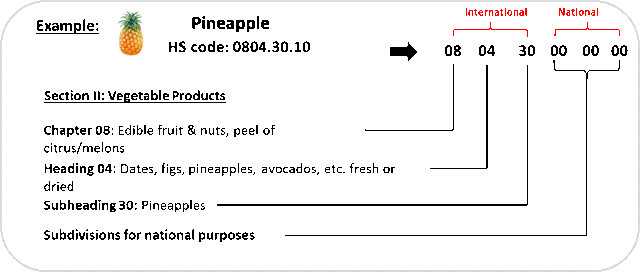
Step 3 - Calculate the Customs Value
Unraveling the concept of 'Customs Value' can often seem like deciphering a foreign language, wouldn't you agree? It's pivotal to understand that the customs value is not identical to the invoice value of your products. When shipping goods from Qatar to France, the customs value is actually the CIF (Cost Insurance and Freight) value.
How does it work? Let's say your goods are valued at $5,000. Add the cost of international shipping, which could be around $500, along with an insurance cost of $100. In this instance, your CIF value, or customs value, becomes $5,600, not merely the original $5,000 of your goods.
Essentially, you're establishing the base on which the customs duties will be calculated. So, getting this right reduces the potential for unexpected expenses popping up in your shipping process. It’s like avoiding the hidden rocks when you're sailing the sea. Fun, isn't it?
Step 4 - Figure out the applicable Import Tariff
An import tariff is essentially a tax imposed on products imported from other countries. For goods imported to France from Qatar, these tariffs are typically established by the European Union. To figure out the specific tariff for your product, you'll need to consult the TARIC System - European Customs. Just follow these two straightforward steps:
1. Enter the HS code that was identified earlier along with the country of origin (Qatar in our case).
2. The system will then show you the duties and taxes applicable to your product.
Let's work through a quick example using the HS code 1001.19 (a code for certain types of wheat). You enter this code and Qatar as the country of origin. The system might display a tariff rate of 12%. Suppose your insurance and freight (CIF) costs total up to USD 5000. The import duties payable would be calculated as 12% of USD 5000, resulting in duties of USD 600. This gives a realistic picture of how basic customs duty is calculated for goods imported from Qatar to France.
Step 5 - Consider other Import Duties and Taxes
Apart from the standard tariff rate, you may encounter additional import duties when importing goods from Qatar to France, depending on your product and its country of origin. For instance, an excise duty may apply to specific goods like tobacco or alcohol. Anti-dumping taxes come into play if your product is sold below its standard price, which can alter trade dynamics.
Still, the most crucial tax to keep in mind is the Value Added Tax (VAT). In France, the standard VAT rate is generally 20%. To calculate the VAT, add the value of your goods to the cost of shipping and insurance, and then apply the VAT rate. For example, if your goods are valued at $10,000 and your transport and insurance cost $2000, your VAT would be (.20) x (10,000 + 2000) = $2400USD.
Remember, these are merely examples - actual rates may vary. It's important you consult with a customs expert or use a reliable customs duties calculator to avoid unexpected costs and ensure smooth customs clearance. Your attention to these details could be the difference between a successful import and an unfortunate surprise.
Step 6 - Calculate the Customs Duties
Customs duties are inescapable and calculating them accurately is paramount to avoid surprise costs upon your goods' arrival in France. They are deduced using the 'Customs Value' of your shipment, which comprises the cost of the goods, shipping costs, and insurance.
Scenario 1: In the absence of VAT, let's presume a shipment with a Customs Value of $10,000, and a Customs Duty rate of 5%. Your Customs Duty will amount to 5/100$10,000 = $500.
Scenario 2: If VAT also applies, add it to your Customs Duty. Let's assume a VAT rate of 20%. The total payable is the sum of the Customs Duty and VAT: $500 + 20/100$10,000 = $2,500.
Scenario 3: Lastly, if Anti-Dumping Taxes and Excise Duty also get levied, their calculation follows the same principle. If these rates are 10% and 15% respectively, add them to the Customs Duty and VAT. You'll pay $500 (Customs Duty) + $2,000 (VAT) + $1,000 (Anti-Dumping Taxes) + $1,500 (Excise Duty) = $5,000.
Remember, these processes can be complicated and error-prone, with repercussions that can delay your shipment and increase your costs. DocShipper offers comprehensive customs clearance services, ensuring each step gets handled meticulously and you only pay what's necessary. Have your goods cleared swiftly in any corner of the world. Contact us for your free quote within 24 hours!
Does DocShipper charge customs fees?
As a customs broker in Qatar and France, DocShipper doesn't charge you the actual customs duties. Those go straight to the government. What we do charge are the customs clearance fees. This covers our work in handling your shipments' customs procedures. And don't worry, we're all about transparency. You'll receive documents from the customs office to show you only paid what was charged by them, not a penny more. It’s like buying an item in a shop; the sales tax goes to the government, but the service charge is for the shop. Simple, isn't it?
Contact Details for Customs Authorities
Qatar Customs
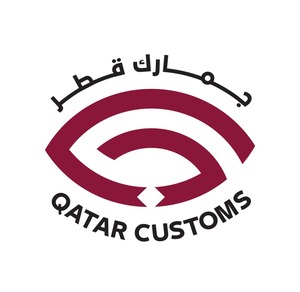
Official name: General Authority of Customs, Qatar
Official website: www.customs.gov.qa/
France Customs

Official name: French Customs and Excise (Douane Française)
Official website: www.douane.gouv.fr/
Required documents for customs clearance
Untangling the web of required documents for customs clearance can feel like a juggle. Don't sweat it! In this section, we dive into the nitty-gritty of the Bill of Lading, Packing List, Certificate of Origin, and Documents of Conformity (CE standard), helping to streamline your shipping experience.
Bill of Lading
Navigating customs between Qatar and France? You won't get far without your Bill of Lading, the VIP pass of shipping documents. Think of it as a baton in a relay race - once the shipper hands it over, it's your turn to run.
But here's the game-changer: the electronic (or telex) release. Picture yourself skipping the long queues and physical paperwork - with telex, you can do just that. It fast-tracks the release of your goods, knocking precious hours, maybe days off your shipping time. Plus, it's savvier on resources and more resilient to error.
If you've got air cargo in the mix, remember your AWB (Air Waybill) carries the same weight in the skies as your Bill of Lading does on the seas.
Wrap it up: preparation is everything. Having your Bill-, or AWB at the ready is like keeping the winning lottery ticket safe. Prime yourself for a smooth, predictable customs clearance.
Packing List
As a shipper, your Packing List is the reliable friend navigating the shipping journey between Qatar and France. it's an absolute necessity, whether you're sending goods by sea or air. This document’s key role? It includes details about the specific items in your shipment – from weight to dimensions and quantity. Let's think of it as the vital 'ID card' for your package.
Picture a time-sensitive shipment of fashion accessories from Doha to Paris - a clear, accurate Packing List ensures your shipment isn't misrouted or held up in customs, affecting those Paris runway deadlines! It’s crucial that you diligently verify every detail on your Packing List, as discrepancies can trigger customs delays. In a world where time is money, accuracy becomes your saving grace.
Commercial Invoice
When shipping goods from Qatar to France, your Commercial Invoice is a crucial document. It lists essential details like the description, quantity, and value of your goods. This invoice is a determinant in calculating duties and taxes at French customs, so any discrepancies could lead to delays or penalties. Make sure your invoice aligns perfectly with other shipping documents like the Bill of Lading or Airway Bill.
For example, if you're transporting 100 barrels of oil, the same quantity should appear across all paperwork. Consider adding a harmonized system (HS) code for each item to expedite clearance. This level of detail leaves little room for questioning at customs, facilitating a smoother, faster transport process for your business.
Certificate of Origin
When it comes to shipping between Qatar and France, the Certificate of Origin (CO) isn't just another paper - it's your ticket to smoother customs clearance. This document tells customs where your goods were manufactured and can unlock preferential duty rates. Picture this: You're exporting artisanal chocolates from Qatar to France. Your CO discloses that they were proudly made in Qatar, potentially qualifying you for lower customs duties under trade agreements. So, never underestimate the power of correctly noting down your manufacturing country on the CO. It's more than an administrative formality, it's a cost-saving tool. Let's not forget, it also lends credibility to your product in the global market. So, keep your CO front and center in your shipping plans. You'll thank yourself at the customs office!
Certificate of Conformity (CE standard)
If you're shipping goods from Qatar to France, securing a Certificate of Conformity (CE standard) is a must. This certification verifies your product adheres to the European Union's health, safety, and environmental guidelines. It's not about quality assurance, but standard compliance. Think of it roughly as Europe's version of the US's FCC or FDA standards.
For instance, if you're moving a batch of medical devices or toys, the CE mark proves they meet requisite guidelines. Bottom-line? Ensure you have the CE standard certification in your document pack. Without it, your shipment could face issues at the French customs. It's like a passport for your goods, granting them smooth entry into France's market. By ensuring your goods meet these standards, you can potentially increase your business's footprint and success in the EU market. Make sure this crucial document is sorted before your goods hit the road, the sea, or the sky.
Your EORI number (Economic Operator Registration Identification)
If you're shipping goods between Qatar and France, an EORI number is crucial. It's a unique identifier used by customs to track imports and exports within the European Union, including France. To obtain this number, you'll need to register with your country's customs department; for French businesses, this involves registering with the French Customs Authority.
Without an EORI, your goods may face delays or even be denied entry at the border. So, imagine this scenario: you've got a crucial shipment of Qatari textiles bound for a fashion house in Paris. Without an EORI, these goods could be stuck in limbo, meaning missed deadlines and unhappy clients.
Remember, an EORI is not just a number, it's a key that unlocks smooth, hassle-free trade within the EU. Don't leave your shipping success to chance, get your EORI today.
Get Started with DocShipper
Moving goods between Qatar and France can be a customs headache. Let DocShipper help you navigate the process easily. We can manage every step of your customs clearance, ensuring a smooth and timely delivery. Don't wrestle with paperwork and regulations - move your focus back to your business. Get in touch and receive a free quote within 24 hours. Reach out to us and simplify your shipping journey today.
Prohibited and Restricted items when importing into France
Don't let unsuspecting hiccups sour your French import experience. Knowing what France won't let through its customs barrier is tricky but crucial. Goods regulations vary widely by country - and France's list might surprise you. We're here to save you from unnecessary headaches (and fines!) further down the line. Let’s dig into it.
Restricted Products
- Firearms, Defense, and Security-Related Items: You’ll need to apply for an import license from the French Ministry of Defense.
- Pharmaceuticals: It's crucial that you acquire a permit from the French Agency for Medicinal Products and Health Products Safety (ANSM).
- Organic Products: Make sure to apply for certification from the Ministry of Agriculture, Agrifood, and Forestry of France to validate its organic status.
- Animals and Animal Products: If live animals are a part of your shipment, an import permit from the Ministry of Agriculture is necessary.
- Alcohol and Tobacco: France requires you to register with the French Customs Agency.
- Radioactive Materials: the French Nuclear Safety Authority is the right place to get your import permit.
- Precursors: Substances that can be used in the illicit manufacture of narcotic drugs and psychotropic substances, also require a permit from ANSM.
Getting the necessary permits in advance ensures smooth customs procedures and quick delivery. Always confirm if your product needs a special permit or license before organizing the shipment. Be aware each category might have its specifics so additionally research might be necessary.
Prohibited products
- Narcotics (excluding prescribed drugs)
- Unauthorized weapons and ammunition
- Human remains or ashes
- Live animals and endangered species
- Hay and straw
- Counterfeit monetary instruments
- Cultural artifacts that are removed without a license
- Unauthorized fireworks or explosives
- Radioactive materials
- Discs, tapes, sound, or video recordings, software, clothing, or other items infringing intellectual property rights
- Items intended to be used in illegal gambling
- Seditious and treasonable material
- Certain plants, seeds, and vegetables
- Tobacco leaf and unmanufactured tobacco
- Rough diamonds
- Any goods bearing a false origin statement
Are there any trade agreements between Qatar and France?
Yes, while there isn't a direct Free Trade Agreement between Qatar and France, both are part of significant international trade bodies like the World Trade Organization. This partnership can yield lower tariffs or easier access to markets for your business. Furthermore, the France-Qatar Business Club promotes trade links, while plans for new infrastructure like the proposed railway line could soon enhance connectivity. It's important to stay informed about these trading dynamics, as they may impact your shipping decisions.
Qatar - France trade and economic relationship
Qatar and France have a long-standing, lucrative trade relationship tracing back to the mid-20th century. Among the shared economic milestones, the noteworthy €300 million French investment in Qatar's energy sector in 2008 stands out.
Today, diverse sectors define their economic ties, with aero and defense, energy, construction, and luxury goods trading at the forefront. France routinely ranks within Qatar's top five export destinations, with petroleum gases and oils being the largest commodities transported.
Over the last five years, French investments in Qatar have soared by over 50%, signaling a growing confidence in mutual economic ties. As of 2022, the trade volume sat at an impressive €4 billion. Reciprocally, Qatar's holdings in France, particularly the luxury and real estate sectors, are substantial. Overall, Qatar-France trade and investment dynamics demonstrate a robust, diversified economic connection, offering huge potential for businesses seeking a piece of this vibrant trade pie.
Your Next Step with DocShipper
Afraid of the complex duties, regulations, and customs between Qatar and France? DocShipper has you covered. Our team of experts orchestrates your shipment with precision and reliability each step along the journey. Save valuable time and resources - let us handle your shipping needs. Reach out to us today - we make international shipping simpler!
Additional logistics services
Dive into our wide range of added logistics services, perfect for streamlining your entire supply chain. From warehousing to distribution, DocShipper is your end-to-end solution.

Warehousing and storage
Finding the right warehousing system in Qatar or France can be a labyrinth, especially when it's crucial to maintain specific conditions, say, keeping luxury chocolates from melting. If this speaks to you, then our tailored and temperature-controlled warehousing solutions might be your gamechanger. Dip into the details on our dedicated page: Warehousing.

Packaging and repackaging
When shipping goods from Qatar to France, correct packaging and repackaging is essential. It safeguards your products against harsh weather, handling errors, and customs inspection procedures. Imagine sending delicate glassware or machinery parts - without reliable packaging, the risk of damage is high. A responsible agent will ensure each item is packed to withstand these hurdles, achieving peace of mind and keeping returns at a minimum. This service becomes your first line of defense in global shipping. Learn more on our page: Freight packaging.

Cargo insurance
Cargo Insurance is your safeguard during the transporting of your goods. Unlike standard fire insurance policies, this covers more ground, providing peace of mind against many forms of damage and loss. Imagine if your shipment faces severe weather or accidental damage mid-journey; with cargo insurance, you're protected. It's a preventive measure that keeps your business running smoothly, mitigating risks at every corner. Learn more on our dedicated page: Cargo Insurance.

Supplier Management (Sourcing)
Stressed about finding reliable suppliers in Asia or East Europe for your business? With DocShipper's Supplier Management, we locate trustable suppliers and streamline your entire procurement process, squashing language barriers along the way. Imagine less stress, fewer miscommunications, and a smoother, efficient procurement process from start to finish.

Personal effects shipping
Afraid your beloved antique mirror or Italian leather couch won't make it from Qatar to France intact? No worries - our Personal Effects Shipping ensures fragile or bulky goods are handled with expert care. Imagine, we're like a nurse for your authentic Qatari rug, making sure it arrives in Paris just as plush and vibrant. Trust in our dedicated team's flexibility to safely pack and transport your personal treasures.

Quality Control
Quality control is your secret weapon for flawless shipping from Qatar to France. Imagine shipping ornate Arabic lamps that, upon arrival, have faulty wiring. Disaster, right? Regular inspections ensure your goods meet French and Qatari standards, averting unpleasant surprises. So, take that pressure off with our quality control service – ensure a smooth, complaint-free journey for your goods.

Product compliance services
Product compliance is a must-have when importing or exporting goods. Our services ensure that your items meet all needed regulations, avoiding unnecessary delays or rejections at customs. We offer laboratory testing for certification to verify your products' compliance every time, ensuring a smooth shipment process. After all, no one wants their shipment stalled because of overlooked standards.
FAQ | Freight Shipping between Qatar and France | Rates - Transit times - Duties and Taxes
What is the necessary paperwork during shipping between Qatar and France?
When shipping from Qatar to France, you'll need to take care of a few essential documents. Firstly, the bill of lading is required for sea freight and the air way bill for air freight. In most cases, we at DocShipper handle these for you. However, a packing list and commercial invoice are something you must provide. Please note, additional documentation, such as the Material Safety Data Sheet (MSDS) or specific certifications, might be required based on your goods. It's crucial to ensure all your paperwork is complete to avoid any complications in the shipping process.
Do I need a customs broker while importing in France?
Absolutely, a customs broker can be instrumental when importing into France due to the complexity of the process and the necessary documents involved. As your trusted partners at DocShipper, we are well-equipped to effectively manage these complexities and requirements. In fact, we represent your cargo at customs on most of your shipments. Having a dedicated customs broker on your side helps ensure efficient and prompt clearance of your goods without any undue hassles. Trust us to navigate the intricacies of French customs so you can focus on your core business. A customs broker isn't mandatory, but it's highly recommended.
Can air freight be cheaper than sea freight between Qatar and France?
When it comes to comparing the cost of air freight versus sea freight between Qatar and France, there are several key factors to consider such as the route, weight, and volume of your cargo. While we cannot provide a blanket answer, on average, air freight could potentially be cost-effective if your shipment is less than 1.5 cubic meters or weighs less than 300 kg (660 lbs). However, we at DocShipper understand that each shipment is unique. Therefore, your dedicated account executive will always work on providing the most competitive option tailored to your specific shipping needs. Be rest assured that we're committed to getting your goods where they need to be, in the most efficient and budget-friendly way.
Do I need to pay insurance while importing my goods to France?
As DocShipper, we advise that while insurance isn't legally required for shipping goods to France, it's highly advisable. Numerous incidents can occur during transit, including damage, loss, or theft of goods. Thus, investing in insurance offers an additional layer of protection to cover any unexpected costs related to these potential disruptions. Remember, the goal is to minimize risk while maximizing your peace of mind in the import process.
What is the cheapest way to ship to France from Qatar?
The cheapest way to transport goods from Qatar to France, considering the distance and trade lanes, would be via sea freight. This form of transport is economical for large volumes. However, it takes 4-6 weeks. If speed is essential, consider air freight, but keep in mind, it's more expensive. We, at DocShipper, can provide a full suite of services for both these options and guide you to make the most cost-efficient choice.
EXW, FOB, or CIF?
Understanding the best trade terms to use often hinges on the nature of your relationship with your supplier. Having said that, it's worth noting most suppliers are not logistics professionals. That's where we can step in. Here at DocShipper, we suggest you leave the processes of international freight and destination procedures to us, as they can be rather complex. In general, suppliers tend to sell under EXW (Ex Works), right at their factory door, or FOB (Free On Board), which includes all local charges up to the terminal of origin. Regardless, we are equipped to provide door-to-door services, ensuring your goods are safely transported from the supplier's doorstep to your specified location.
Goods have arrived at my port in France, how do I get them delivered to the final destination?
If your goods have arrived at a French destination under CIF/CFR incoterms, you'll need to enlist the aid of a customs broker or freight forwarder. They will assist in clearing the goods, paying import charges, and ensuring delivery. Alternatively, we can manage the process through DAP incoterms, taking care of all details for you. Please confirm this with your dedicated account executive.
Does your quotation include all cost?
Indeed, our quotation covers every cost except for the duties and taxes at your destination. Be assured, we avoid hidden fees to prevent unwelcome surprises. If needed, your dedicated account executive is always at your service to estimate your expected duties and taxes.
